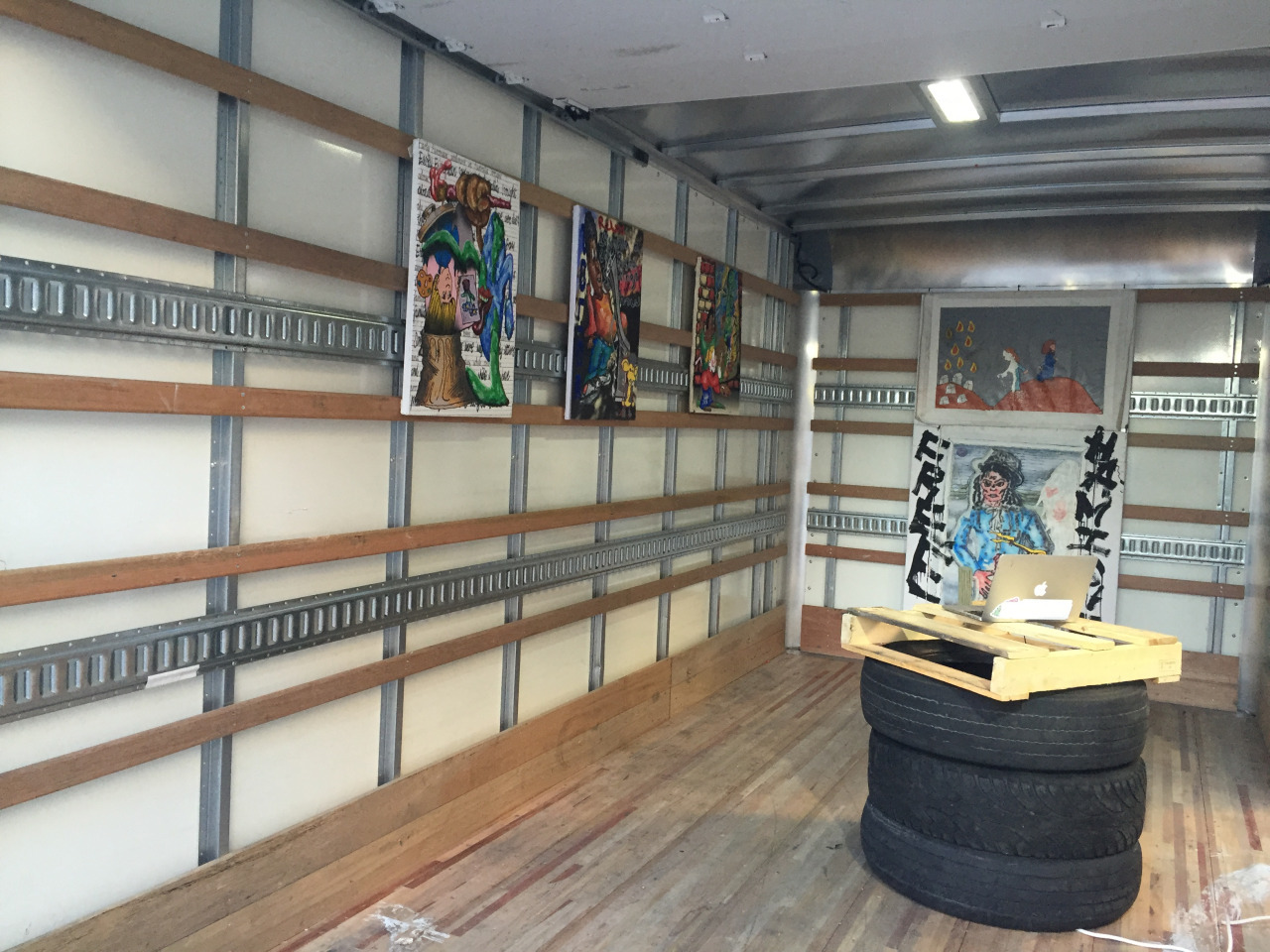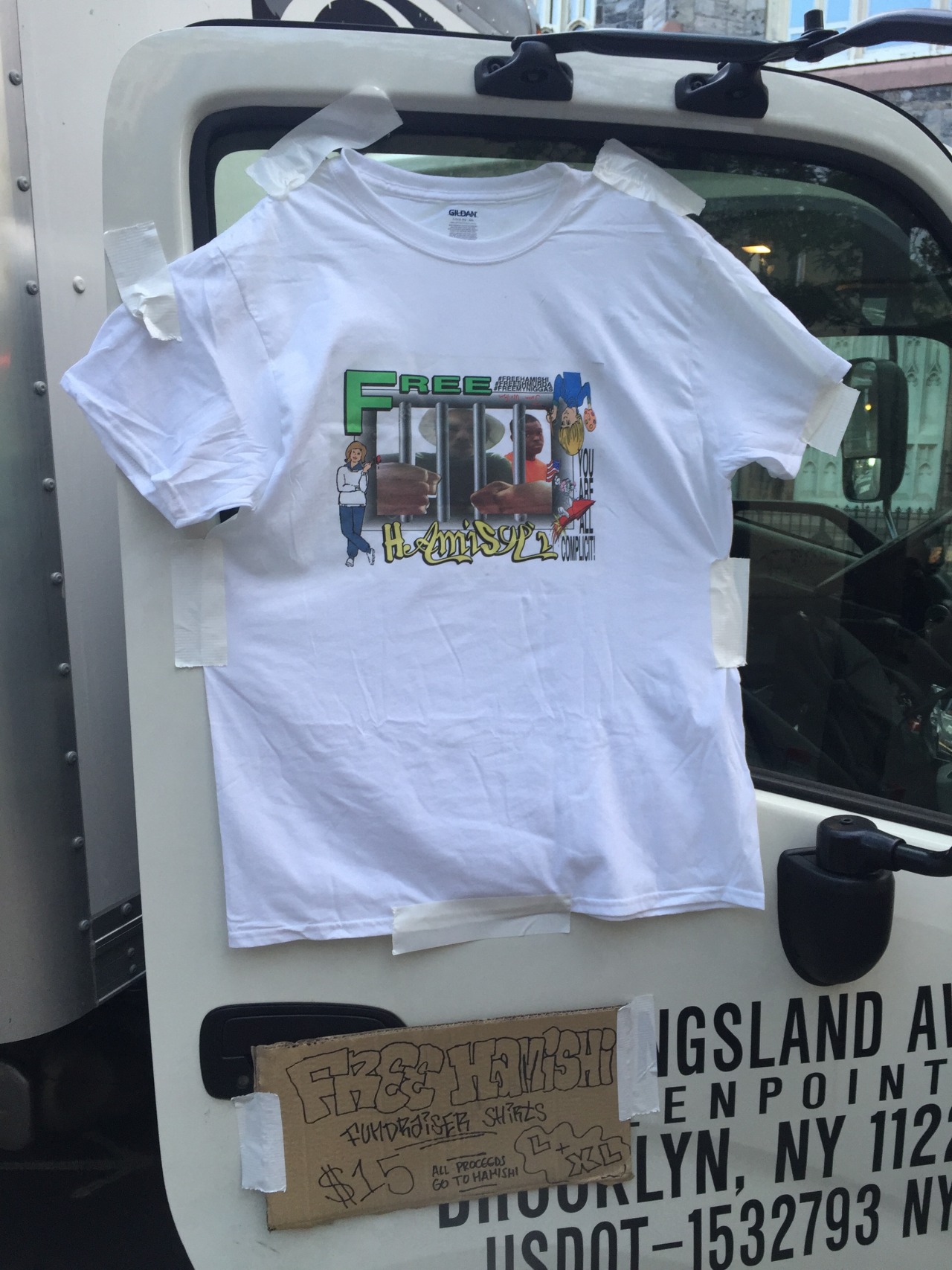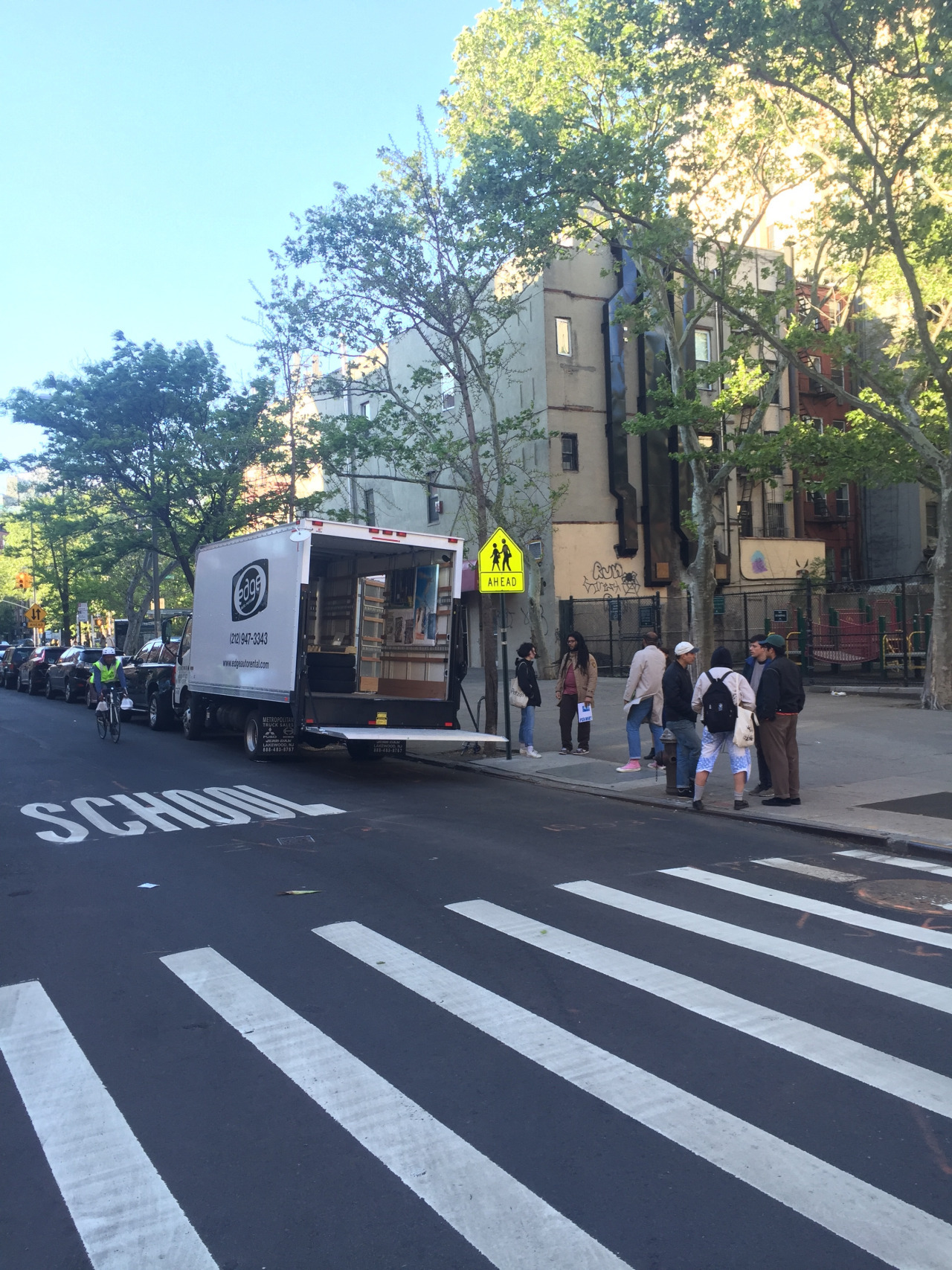Text by Tim Gentles
Earlier this month, in the back of a small flatbed truck outside Reena Spaulings Gallery in Lower Manhattan, the nomadic curatorial initiatives Kodomo.us and Melbourneoffsiteindex.org presented an offsite exhibition with work by Hannah Black, Hamishi Farah, Winslow Laroche, Sondra Perry and Zac Segbedzi. Pointedly titled Reena’s Bedstuy Glove Affair, the project was initiated by Segbedzi, who visited New York after participating in NADA art fair with collaborator and fellow Melbourne artist Hamishi Farah.
Hanging over the exhibition is the backstory about Farah’s wrongful deportation from the US that some readers may know from his public Facebook post detailing the matter, and the subsequent press it received. In April, Farah was travelling through Los Angeles airport on his way to New York when he was intercepted by customs agents, held for hours with no explanation, and ultimately refused entry into the United States and sent back to Australia. Given that Farah is black, this blunt injustice is also sadly predictable, and has led to a considerable outpouring of support from the artistic community. Farah was present in spirit, if not in person, through the sale of Free Hamishi fundraiser t-shirts, designed by Segbedzi, the proceeds of which go toward his legal costs.
Featured in the exhibition proper are Farah and Segbedzi’s paintings alongside work shown on a single laptop by Black, Laroche and Perry, as well as a small, photocopied publication made by Laroche called Yoink!. All of the works from these five black artists deal in some sense with the ways in which blackness is inseparable not just from their own practices, but from the institution of art itself.
In this light, Laroche’s booklet proves instructive. Featuring a short text written by the artist on the subject of craftsmanship, Laroche describes that what he calls “the return of whitewashed craft and fan art povera” in contemporary art circles, which is intimately tied to race and to modern art’s legacy of appropriating African art. The publication then features three contentious “WhiteWashed Craft 00 Fan Art Povera” word search puzzles, in which readers are invited to find the names of various white, 20-something New York art luminaries, about which Laroche comments:
every1 of the artists listed in the next three pages can literally be one artist, even put some of their press releases next to each other and it would make one long press release repeating itself over and over again…
This recent ubiquity of artistic forms among young New York artists with a decidedly material, handcrafted sensibility has been anecdotally noted but hardly substantively critiqued, but the terms laid out in Yoink! feel like a good place to start. The work of many of the subjects of Laroche’s word searches could be taken to task as merely Mike Kelley rehashed—characterized by punk posturing and the slavish evocation of formal shittiness as authenticity. But, much worse is the uncomfortable pandering (of these au courant artists) to outsider art discourse, intentionally mining marginality for content.
This is what the title of the exhibition is getting at, encouraging a reading of Reena Spaulings and Bed-Stuy Love Affair as models for how to leverage subcultural capital in the art world and turn it into real capital. It is precisely through an outsider’s perspective (by being, say, both black and Australian) that the social power embodied in such quasi-institutions comes into starker relief. Not only are they defined by their de facto exclusion of blackness, but the air of subversion that animates them is thoroughly institutionalized by the time they reach the other side of the world. And if there’s a gaucheness to singling out two particular galleries in the title, it serves to draw lines between inside and outside in an art world whose globalization is often misconstrued as granting its participants equal access.
To this end, both Farah’s and Segbedzi’s work uses the low-blow self-reflexivity of Reena Spaulings against it. One of Segbedzi’s paintings riffs on a couple of tropes of quintessentially Reena Spaulings artist Merlin Carpenter. Against a blurry depiction of the East Broadway storefront on top of which Reena Spaulings sits, Segbedzi has painted a phrase that has appeared in one of Carpenter’s paintings—“Relax, it’s only a crap Reena Spaulings show”—a depiction of a Fat Albert-esque character being menaced by a disembodied gun, and another Carpenter motif, the word “POLICE” in blue letters written vertically down the painting’s left hand side. While in Carpenter’s exhibition the term “police” is used as a flippant analogy between the apparatuses of state power and the power and authority of the gallery space, the juxtaposition here with Fat Albert and the gun points to the real and embodied threat that these structures pose to black lives.
There is an apologetic tone to Segbedzi’s poster for the show that belies the urgency of the work included here. Noting that he “kinda like[s] Bedstuy Love Affair tbh…,” Segbedzi’s willingness to step on other people’s toes is refreshing in New York’s art world that is typically far too deferential towards its own legacy. The show also, correctly I think, places a generation of younger artists, of which Bed-Stuy Love Affair is but one of the more high-profile and au courant examples, as the progeny of the post-institutional critique tradition of galleries like Reena Spaulings—a model of the art world as a mechanism for the concentration of social power, made all the more perverse by its supposed self-reflexivity. By contrast, Reena’s Bedstuy Glove Affair proposes something considerably more promising–artistic practice as a genuinely diasporic political formation.
*All images of Reena’s Bedstuy Glove Affair via melbourneoffisiteindex.org





